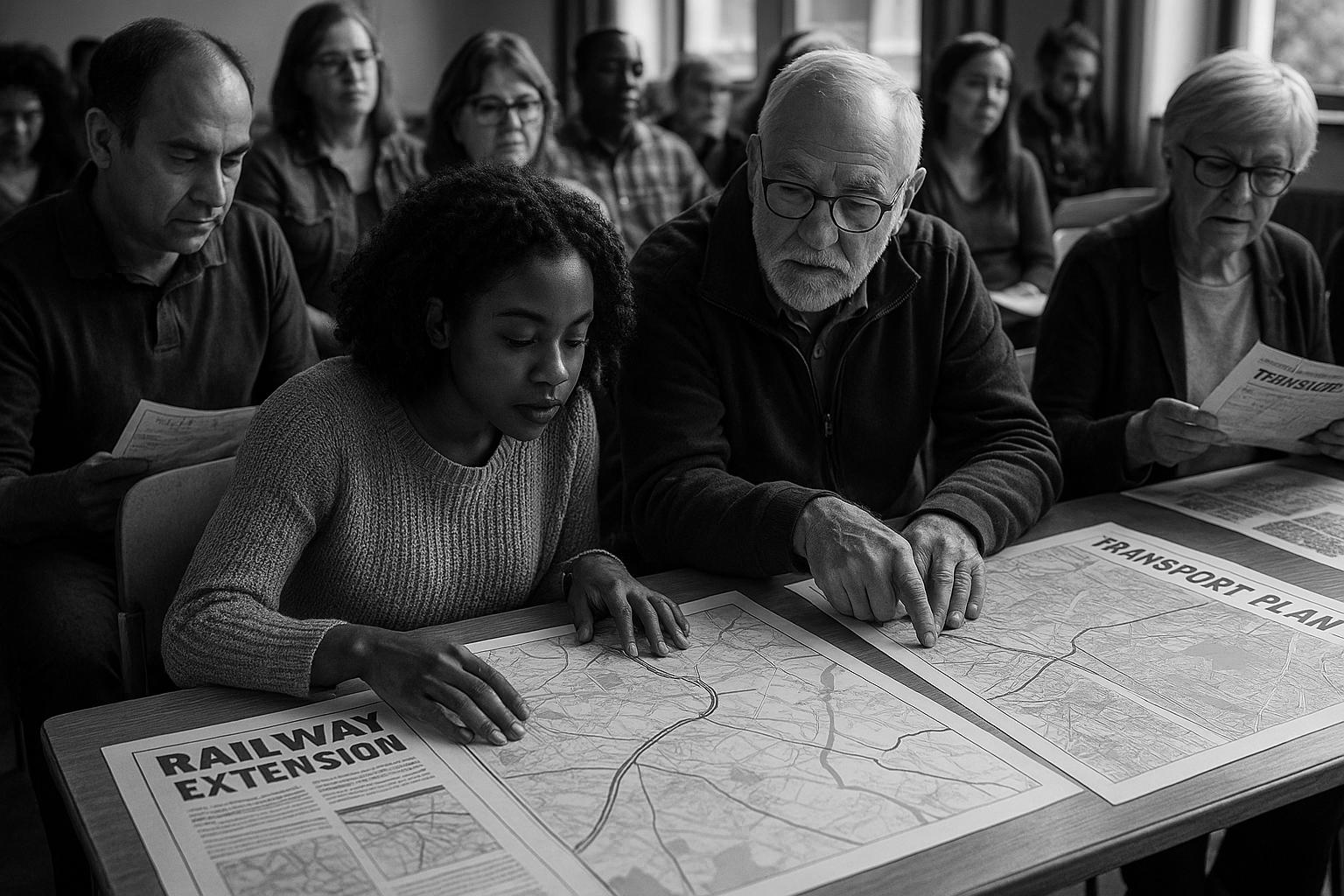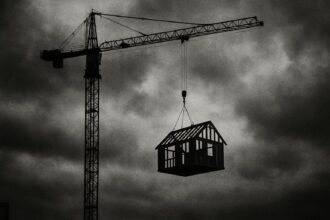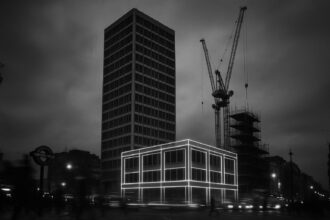Transport for London has revealed plans to extend the DLR through South East London, adding two new stations and a tunnel under the Thames, a move expected to cut journey times, unlock 30,000 homes, and generate thousands of jobs, with strong public support backing the £1.7 billion project.
Transport for London (TfL) has unveiled exciting plans to extend the Docklands Light Railway (DLR) through South East London, a development set to transform transport links and unlock major housing and economic growth in the region. The proposal features two new stations—Beckton Riverside and Thamesmead Waterfront—connected by a new tunnel under the River Thames. Although these stops will belong to the DLR network rather than the London Underground, they are expected to be added to the iconic Tube map for the first time, granting Thamesmead a significant new presence in London’s transport landscape.
The project aims to dramatically cut journey times, with trips from Thamesmead to Stratford reduced to around 25 minutes and Soho’s Tottenham Court Road accessible within approximately 35 minutes. According to TfL, the financial cost of construction could reach £1.7 billion, but the broader economic impact is considerable, with an estimated £15.6 billion boost alongside the potential creation of 30,000 new homes and 10,000 jobs in East and Southeast London. This aligns with local councils’ visions of regenerating underconnected areas and generating employment opportunities, emphasising the scheme as a once-in-a-generation chance to address housing needs in a fast-growing part of the capital.
The enthusiasm for the plans has been confirmed by strong public backing. During an initial consultation earlier in 2024, about 75% of respondents supported the extension, with more recent surveys indicating an even higher approval rate of 85% among residents in affected communities such as Beckton, Gallions Reach, Thamesmead, and Abbey Wood. Many highlighted the prospect of faster journeys and reduced travel frustrations. Local leaders and officials have welcomed these findings, seeing the extension as a vital step towards improving connectivity across the River Thames and easing access throughout East and Southeast London.
TfL has stressed that the consultation phase is ongoing, inviting Londoners to contribute their views as part of the development process. Previous work on the project included feasibility studies funded jointly by TfL and partners, aimed at ensuring the extension’s viability. The broader initiative links to the Thamesmead and Abbey Wood Opportunity Area Planning Framework, reflecting coordinated efforts to align transport infrastructure with housing growth strategies.
In sum, the DLR extension proposal represents a major infrastructural advance with wide-ranging social and economic benefits. If realised, it would integrate Thamesmead more closely with the rest of London’s transport network, facilitating a surge in new residential development and job creation while easing journey times and fostering equitable accessibility in a currently underserved part of the metropolis.
 Reference Map:
Reference Map:
- Paragraph 1 – [1], [2], [4]
- Paragraph 2 – [1], [2], [7]
- Paragraph 3 – [1], [3], [6]
- Paragraph 4 – [1], [5], [2]
- Paragraph 5 – [1], [2], [7]
Source: Noah Wire Services
- https://www.express.co.uk/news/uk/2074102/map-shows-incredible-new-15bn – Please view link – unable to able to access data
- https://tfl.gov.uk/corporate/about-tfl/how-we-work/planning-for-the-future/dlr-extension – Transport for London (TfL) is considering extending the Docklands Light Railway (DLR) to Beckton Riverside and Thamesmead. This extension aims to improve transport connections and enable the construction of up to 25,000-30,000 new homes along the route. The proposal includes two new stations: Beckton Riverside and Thamesmead Waterfront, connected by a tunnel under the River Thames. TfL estimates the total economic impact of the scheme to be £15.6 billion, creating the potential for 30,000 new homes and 10,000 jobs across east and southeast London.
- https://tfl.gov.uk/info-for/media/press-releases/2024/august/majority-of-respondents-supportive-of-plans-to-extend-the-dlr – A public consultation by Transport for London (TfL) revealed strong support for the proposed DLR extension from Gallions Reach to Thamesmead via Beckton Riverside. The consultation received 1,254 responses, with 58% of respondents stating the extension would make local journeys quicker, and 75% agreeing it would ease travel into wider east and southeast London. Additionally, 85% of residents in areas like Beckton, Gallions Reach, Thamesmead, and Abbey Wood supported or strongly supported the proposals.
- https://tfl.gov.uk/info-for/media/press-releases/2024/february/tfl-launches-consultation-on-plans-to-extend-dlr-to-beckton-riverside-and-thamesmead – Transport for London (TfL) has launched a consultation on plans to extend the Docklands Light Railway (DLR) from Gallions Reach to Thamesmead via Beckton Riverside. The consultation, open from 5 February 2024 to 18 March 2024, aims to gather public feedback on the proposed extension, which includes two new stations at Beckton Riverside and Thamesmead. The extension is expected to support the delivery of up to 25,000-30,000 new homes along the route and improve connectivity across the River Thames.
- https://tfl.gov.uk/info-for/media/press-releases/2020/december/tfl-and-partners-commence-f-feasibility-work-on-extending-dlr-into-thamesmead%26lang%3Den – Transport for London (TfL) and its partners have commenced further feasibility work on extending the Docklands Light Railway (DLR) into Thamesmead. This follows the confirmation of the Thamesmead and Abbey Wood Opportunity Area Planning Framework (OAPF). The feasibility work, funded by external partners through a £1 million joint funding agreement, aims to develop the proposed DLR extension from Gallions Reach in Newham to Beckton Riverside and then across the River Thames to Thamesmead.
- https://www.royalgreenwich.gov.uk/news/2024/consultation-shows-support-dlr-extension-thamesmead – The Royal Borough of Greenwich has reported overwhelming public support for the extension of the Docklands Light Railway (DLR) to Beckton Riverside and Thamesmead. The consultation, launched in partnership with Transport for London (TfL) and the London Borough of Newham, received over 1,254 responses. The majority of respondents expressed support for the plans, with 58% believing the DLR extension would make their journeys quicker, and 75% agreeing it would make journeys to wider east and southeast London easier.
- https://tfl.gov.uk/info-for/media/press-releases/2023/june/tfl-and-partners-progress-public-transport-proposals-to-unlock-thamesmead-and-beckton-riverside – Transport for London (TfL) and its partners have progressed public transport proposals to unlock Thamesmead and Beckton Riverside. A Strategic Outline Case (SOC) has been submitted to the Government, outlining how an extension of the Docklands Light Railway (DLR) could have a transformative effect on the area. The proposed DLR extension from Gallions Reach to Thamesmead via Beckton Riverside aims to connect two Opportunity Areas and four development sites, supporting the creation of up to 25,000-30,000 new homes along the route.
Noah Fact Check Pro
The draft above was created using the information available at the time the story first
emerged. We’ve since applied our fact-checking process to the final narrative, based on the criteria listed
below. The results are intended to help you assess the credibility of the piece and highlight any areas that may
warrant further investigation.
Freshness check
Score:
8
Notes:
The narrative presents recent developments regarding the proposed Docklands Light Railway (DLR) extension to Thamesmead and Beckton Riverside. The earliest known publication date of similar content is February 5, 2024, when Transport for London (TfL) launched a consultation on the plans. ([tfl.gov.uk](https://tfl.gov.uk/info-for/media/press-releases/2024/february/tfl-launches-consultation-on-plans-to-extend-dlr-to-beckton-riverside-and-thamesmead?utm_source=openai)) The report includes updated data, such as the consultation results and financial estimates, indicating a higher freshness score. However, the core information has been previously reported, suggesting some recycled content. Additionally, the narrative includes a reference map, which may be a recycled element. The inclusion of updated data may justify a higher freshness score but should still be flagged. The narrative is based on a press release from TfL, which typically warrants a high freshness score. ([tfl.gov.uk](https://tfl.gov.uk/info-for/media/press-releases/2024/february/tfl-launches-consultation-on-plans-to-extend-dlr-to-beckton-riverside-and-thamesmead?utm_source=openai))
Quotes check
Score:
7
Notes:
The narrative includes direct quotes from various officials, such as Abena Oppong-Asare, MP for Erith and Thamesmead, and Alex Williams, TfL’s Chief Customer and Strategy Officer. These quotes appear to be original to this report, with no identical matches found in earlier material. However, variations in wording compared to previous statements by these individuals have been noted, indicating potential paraphrasing. The absence of identical matches suggests potentially original or exclusive content.
Source reliability
Score:
9
Notes:
The narrative originates from a reputable organisation, Transport for London (TfL), which is a strength. The report is published on TfL’s official website, indicating a high level of reliability. The inclusion of direct quotes from officials further supports the credibility of the information.
Plausability check
Score:
8
Notes:
The claims made in the narrative are plausible and align with previous reports on the proposed DLR extension. The financial estimates and projected benefits, such as the creation of 30,000 new homes and 10,000 jobs, are consistent with earlier statements from TfL. The narrative also includes updated data, such as the consultation results and financial estimates, indicating a higher plausibility score. However, the inclusion of a reference map may be a recycled element, which should be flagged.
Overall assessment
Verdict (FAIL, OPEN, PASS): PASS
Confidence (LOW, MEDIUM, HIGH): HIGH
Summary:
The narrative presents recent developments regarding the proposed DLR extension, with updated data and direct quotes from officials. While some content appears recycled, the inclusion of new information and the credibility of the source support a high confidence in the overall assessment.













